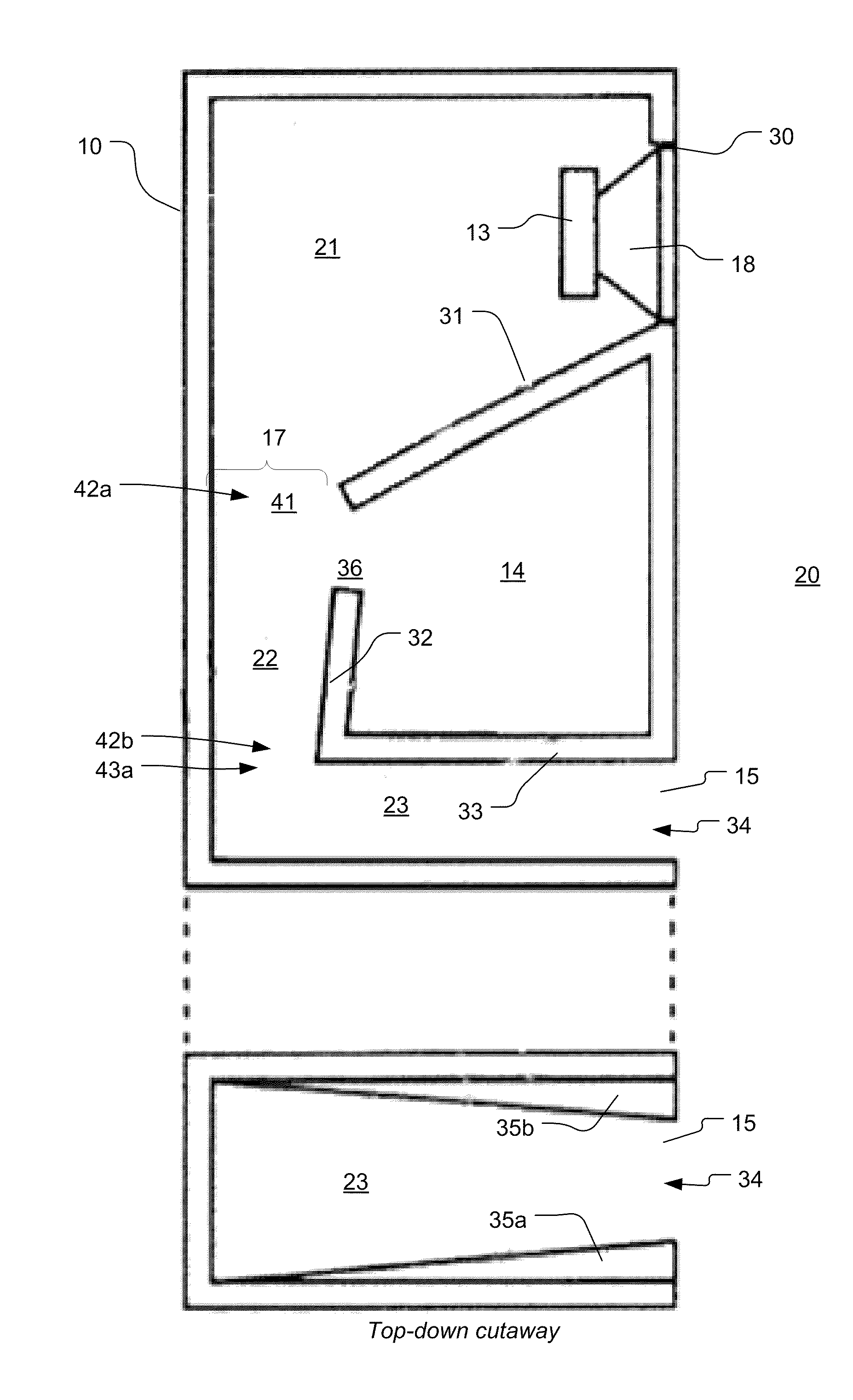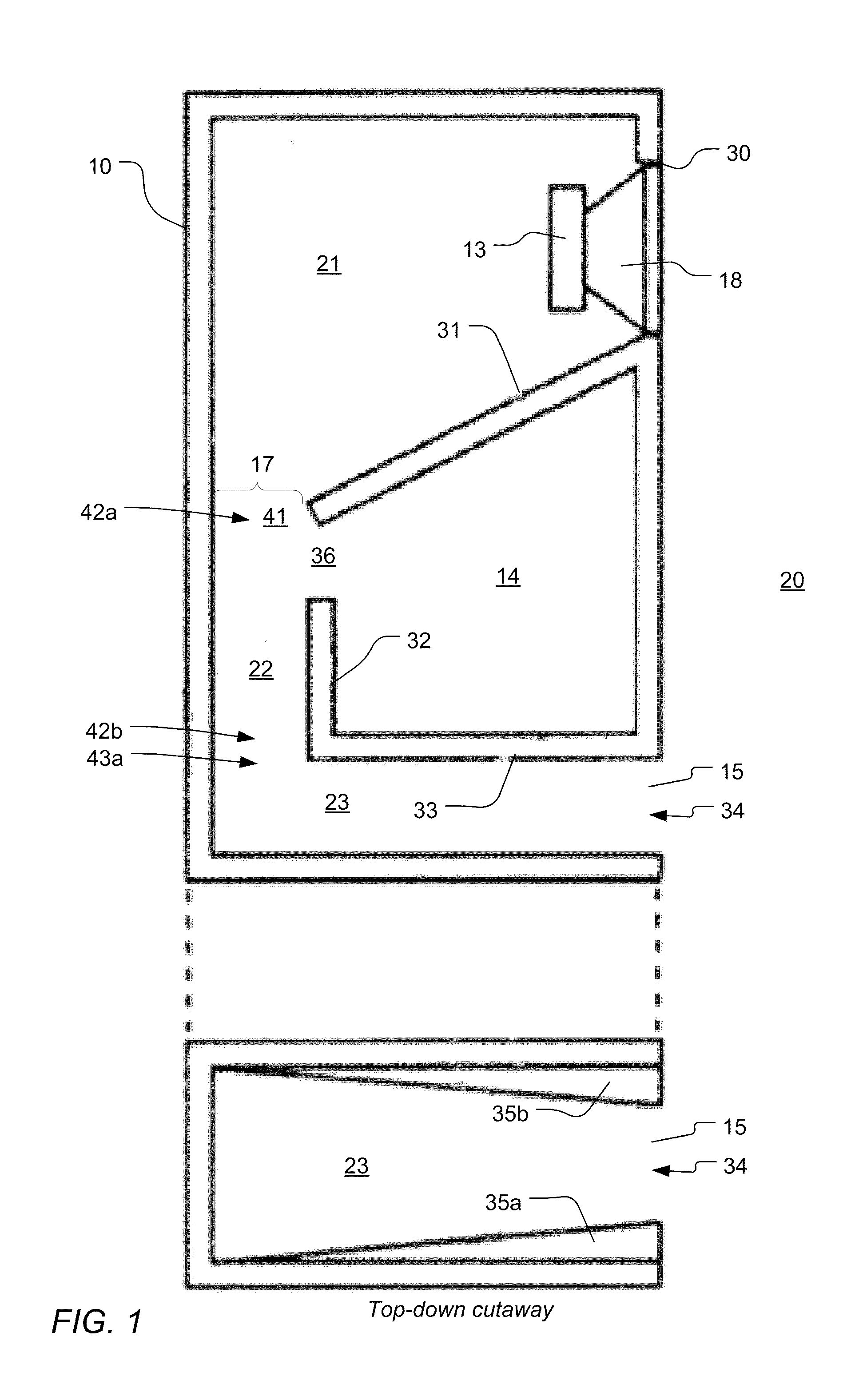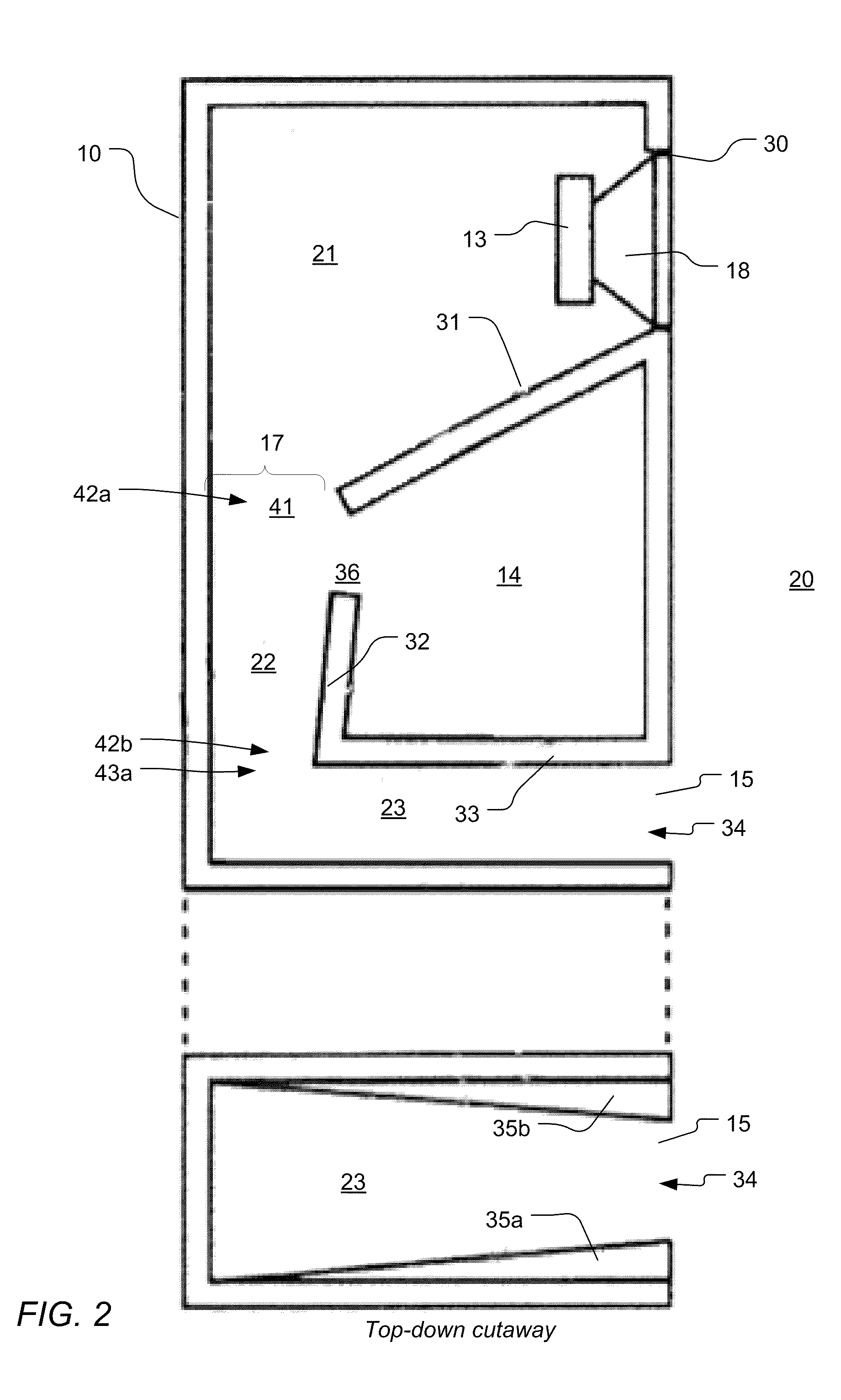Inverse horn loudspeakers
a loudspeaker and inverse horn technology, applied in the direction of transducer details, instruments, electrical transducers, etc., can solve the problems of low efficiency, cost and flexibility of use, large speakers typically being less efficient, and less flexible in placement in the listener's home, so as to achieve low frequency response and high efficiency
- Summary
- Abstract
- Description
- Claims
- Application Information
AI Technical Summary
Benefits of technology
Problems solved by technology
Method used
Image
Examples
Embodiment Construction
[0034]FIG. 1 shows an embodiment of the invention with inverse horn enclosure system 10 comprising at least one electro-acoustic transducer 13 with a movable diaphragm 18 for converting an electrical input signal into a corresponding acoustic output at a pressure. The transducer 13 is mounted in a transducer opening 30 and radiates acoustic output from its front side to an external environment 20, and radiates from acoustic output from its backside into a first (primary) compression chamber 21 within the enclosure 10.
[0035]Compression chamber 21 is at least partially bounded by horn plate 31, which is configured to compress the acoustic output, and thus increase the pressure of the acoustic output, from diaphragm 18 towards an exit 41 of the chamber 21. The compressed acoustic output continues through entrance 42a of a secondary compression chamber 22 at least partially bounded by horn plate 32, through to the exit 42b of compression chamber 22. In this embodiment, compression chamb...
PUM
 Login to View More
Login to View More Abstract
Description
Claims
Application Information
 Login to View More
Login to View More - R&D
- Intellectual Property
- Life Sciences
- Materials
- Tech Scout
- Unparalleled Data Quality
- Higher Quality Content
- 60% Fewer Hallucinations
Browse by: Latest US Patents, China's latest patents, Technical Efficacy Thesaurus, Application Domain, Technology Topic, Popular Technical Reports.
© 2025 PatSnap. All rights reserved.Legal|Privacy policy|Modern Slavery Act Transparency Statement|Sitemap|About US| Contact US: help@patsnap.com



